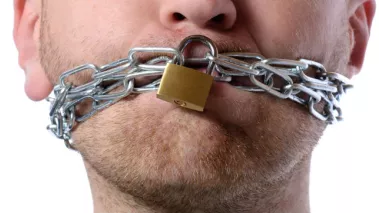Table of Contents
‘Popehat’ on the Media’s Most Common ‘Pro-Censorship Tropes’

When I mention that I work for a free speech organization, one of the first things people often ask me is, “What about hate speech? Hate speech isn’t free speech, right?” Actually, it is. But you probably wouldn’t know it from reading media coverage of recent events, such as the recent New York Times staff editorial entitled “Free Speech vs. Hate Speech.” The editorial board wrote that “the Muhammad Art Exhibit and Contest in Garland, Tex., was not really about free speech. It was an exercise in bigotry and hatred posing as a blow for freedom.” The Times’ implication, of course, is that bigoted or hateful speech is no longer “free speech.”
To combat this and other misconceptions commonly perpetuated by the media, Ken White at Popehat has posted a superb blog entry intended to help people “train themselves to detect and question the media's pro-censorship tropes.” The problem, as White describes it, is that the media “adopts stock phrases and concepts that presume that censorship is desirable or constitutional, and then tries to pass the result off as neutral analysis.” As White points out, this lazy practice “promotes civic ignorance and empowers deliberate censors.”
In addition to the ubiquitous “hate speech” trope, White covers many other ways in which the media misleads readers about the scope of the First Amendment’s protection. Among my favorites is his takedown of those who say “you can’t shout fire in a crowded theater” in an effort to defend censorship. White has long complained about the abuse of this quote, which he has referred to as “the most famous and pervasive lazy cheat in American dialogue about free speech.” In this post, he explains:
Nearly 100 years ago Justice Oliver Wendell Holmes, Jr., voting to uphold the Espionage Act conviction of a man who wrote and circulated anti-draft pamphlets during World War I, said "[t]he most stringent protection of free speech would not protect a man in falsely shouting fire in a theatre and causing a panic."
That flourish — now usually shortened to "shout fire in a crowded theater" — is the media's go-to trope to support the proposition that some speech is illegal. But it's empty rhetoric. I previously explained at length how Holmes said it in the context of the Supreme Court's strong wartime pro-censorship push and subsequently retreated from it. That history illustrates its insidious nature. Holmes cynically used the phrase as a rhetorical device to justify jailing people for anti-war advocacy, an activity that is now (and was soon thereafter) unquestionably protected by the First Amendment.
In his discussion of the ever-popular fighting words trope, White notes that “[n]o discussion of controversial speech is complete without some idiot suggesting that it may be ‘fighting words,’” despite the fact that “[t]he Supreme Court has rejected every opportunity to use the doctrine to support restrictions on speech.”
He also calls out the media’s oft-used invocation of “the line between free speech and [questioned expression],” noting that the “questioned expression” is almost inevitably something protected by the First Amendment:
"The line between free speech and X" is often the rhetorical equivalent to "the line between vegetables and rutabagas": the author doesn't have a coherent argument that rutabagas aren't vegetables, but doesn't like rutabagas and thinks you shouldn't either.
I highly recommend heading over to Popehat to read the post in full. It’s a tremendously useful, accessible resource that FIRE staff will be sharing with friends outside of our First Amendment law bubble for a long time to come.
Recent Articles
Get the latest free speech news and analysis from FIRE.

FIRE's 2025 impact in court, on campus, and in our culture

The trouble with banning Fizz

VICTORY: Court vindicates professor investigated for parodying university’s ‘land acknowledgment’ on syllabus
